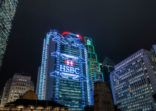“Typically they tend to use ETFs for more targeted exposures,” Cowperthwaite noted during a panel discussion at an event orgarnised by Enhanced Investment Products, provider of XIE Shares, in Hong Kong yesterday. “They will be looking for sector or country exposure as opposed to a global equity ETF.”
“[Clients use ETFs] because they tend to have quite strong views, and are very well informed. ETFs are used to express those views while trying to avoid single stock exposure,” he explained.
Cowperthwaite recommends using ETFs for exposure to more complex sectors, such as healthcare.
“If you look at the hugely complicated deciding factors in the way that health care market moves – everything from market sentiments, opaque government policies to results of [drug] trials – it’s really difficult for an individual investor to understand how individual names will behave,” he told FSA. “I think it’s better for clients to use ETFs for a sector like that,” he added.
Fan Jiang, Asia chief investment strategist at JP Morgan Private Bank who spoke at the event, noted that passive products provide more effective exposure to developed markets or to mature industries. For instance, Chinese equity indices which ETFs track lean heavily on financials and industrials, instead of sectors like technology or consumption.
“For emerging markets and emerging industries, active managers are preferred,” Jiang said. “The three Indian funds we buy have outperformed the indices very easily in years.”
ETF liquidity
The biggest problem facing broader adoption of ETFs in Asia is the perception of a lack of liquidity, Cowperthwaite told FSA.
“The most important thing about the liquidity is the liquidity of the underlying [assets],” he noted. “Effectively, in normal circumstances, you should always be able to get in and out of an ETF. The only one thing to bear in mind is what the friction cost is for creation and redemption.”
The apparent illiquidity in the secondary market, in terms of trading volume, should not be an issue as their clients can either trade the ETFs in the stock exchange or through the primary market subscriptions or redemptions, he said. “If it is less liquid then we go through our global markets team which will source the liqudity for us.”
“Clients know they can get a perfectly good liquidity in the A-shares ETFs, but they just don’t have the same confidence that they will get the liquidity in other ETFs,” he added.
JP Morgan’s Jiang told FSA that liquidity of the underlying assets in emerging markets was a concern when using an ETF. However, if the emerging market is liquid enough, some thematic ETFs can be considered, he added.















